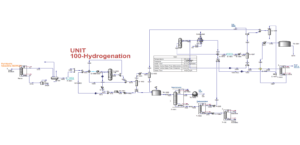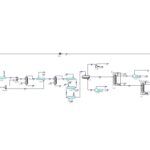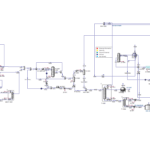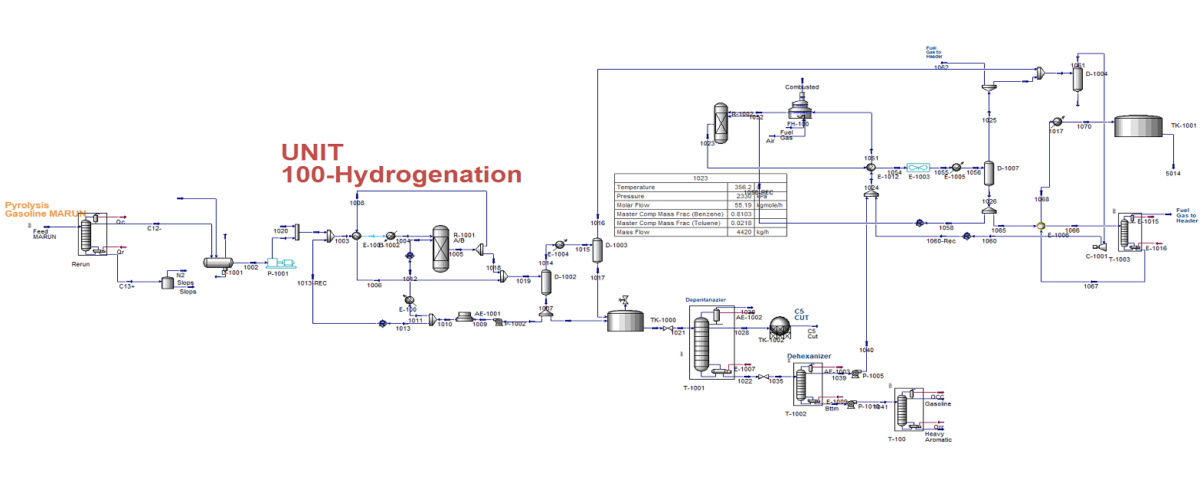Introduction
The hydrogenation unit is one of the key components in many petrochemical processes. In this unit, hydrogen is added to organic compounds, breaking carbon-carbon double or triple bonds and forming simple carbon-hydrogen bonds. This process leads to the saturation of molecules and alters their physical and chemical properties. The unit has widespread applications, including the conversion of vegetable oils into solid fats, the production of higher-quality fuels, and the manufacturing of intermediate chemicals. The hydrogenation process is critical in petrochemical industries for removing unsaturated compounds and impurities by reacting them with hydrogen. This process is typically employed to enhance the stability and quality of products in various hydrocarbon outputs.
Process Description
To initiate the process, a Process Flow Diagram (PFD) is defined. The properties of the input feed, including composition and flow rate, along with the specifications for reactors and separators, are established. Operational conditions (temperature, pressure) are set. Next, a suitable catalyst is selected, and the reaction kinetics are defined. The hydrogen supply rate is configured to ensure adequate hydrogen availability. The design of the separator (distillation columns, flash drums) is implemented to separate the desired products. Operational conditions are then optimized to maximize yield and purity. Finally, the process is optimized to achieve the desired product specifications with minimal operational costs.

Conclusion
By simulating and comparing hydrogenation processes at the Damun and Bandar Imam petrochemical complexes, engineers can identify areas for improvement, optimize production processes, and ensure high-quality product output while minimizing operational costs and environmental impacts.
Simulation and Comparison of Production Processes in Damun and Bandar Imam Petrochemicals Using Hysys
In this project, the simulation and comparison of production processes in the Damun and Bandar Imam petrochemical complexes have been conducted using Aspen Hysys Version 14.


